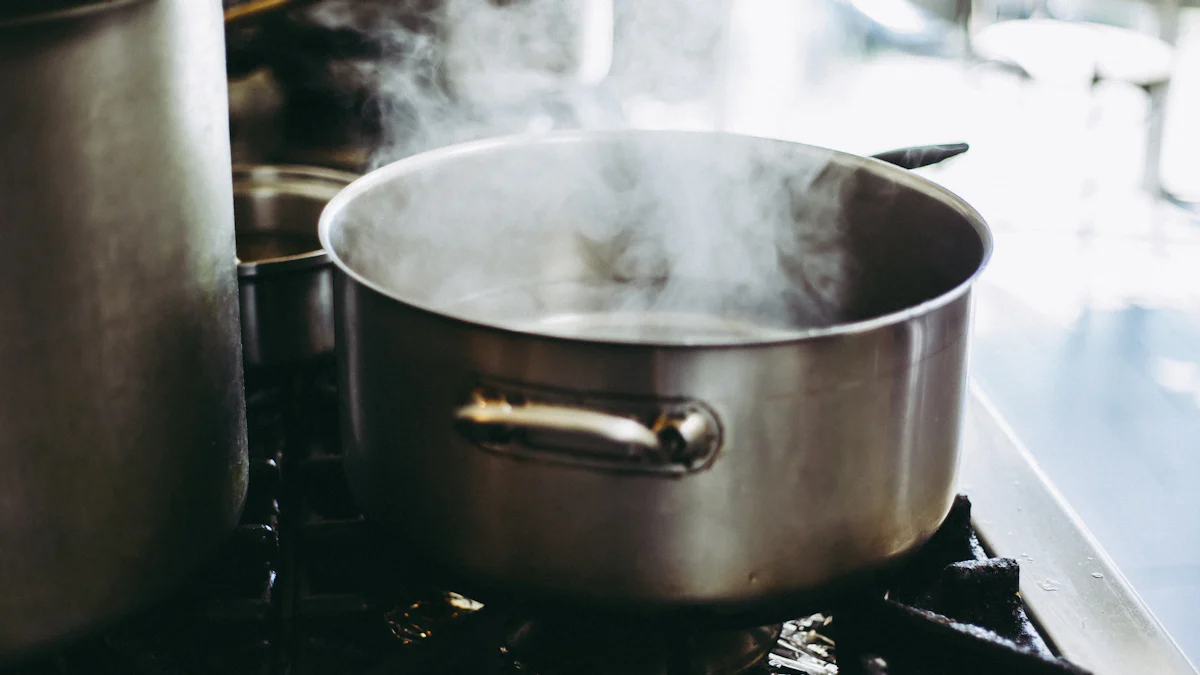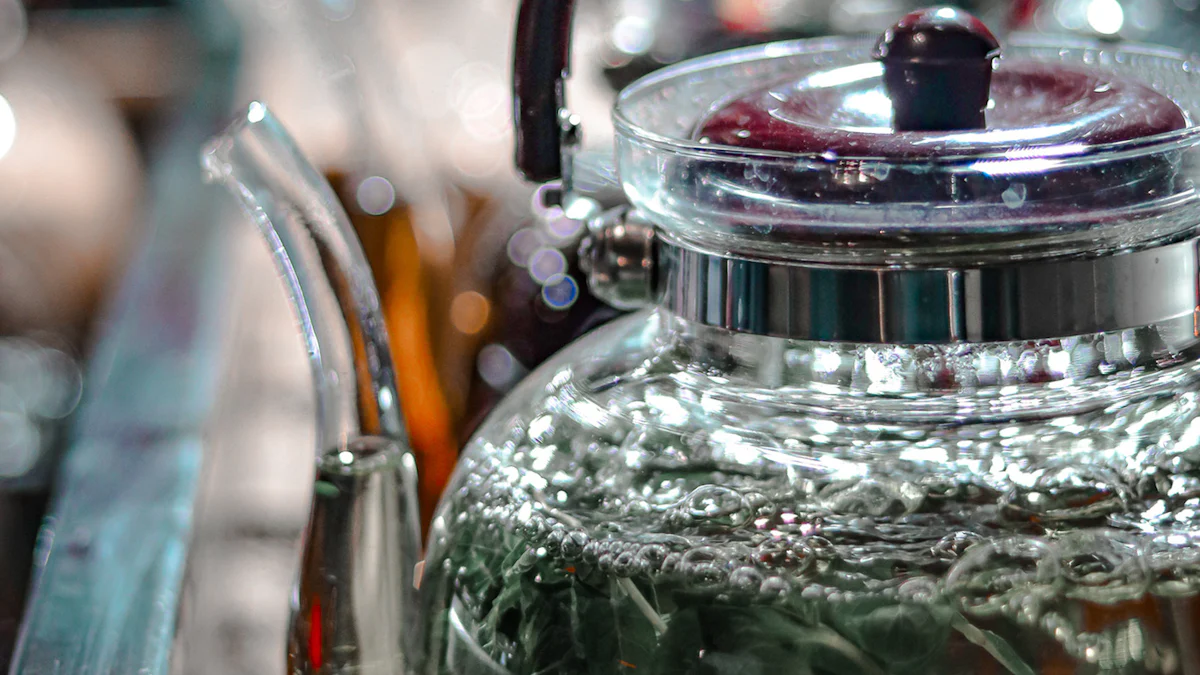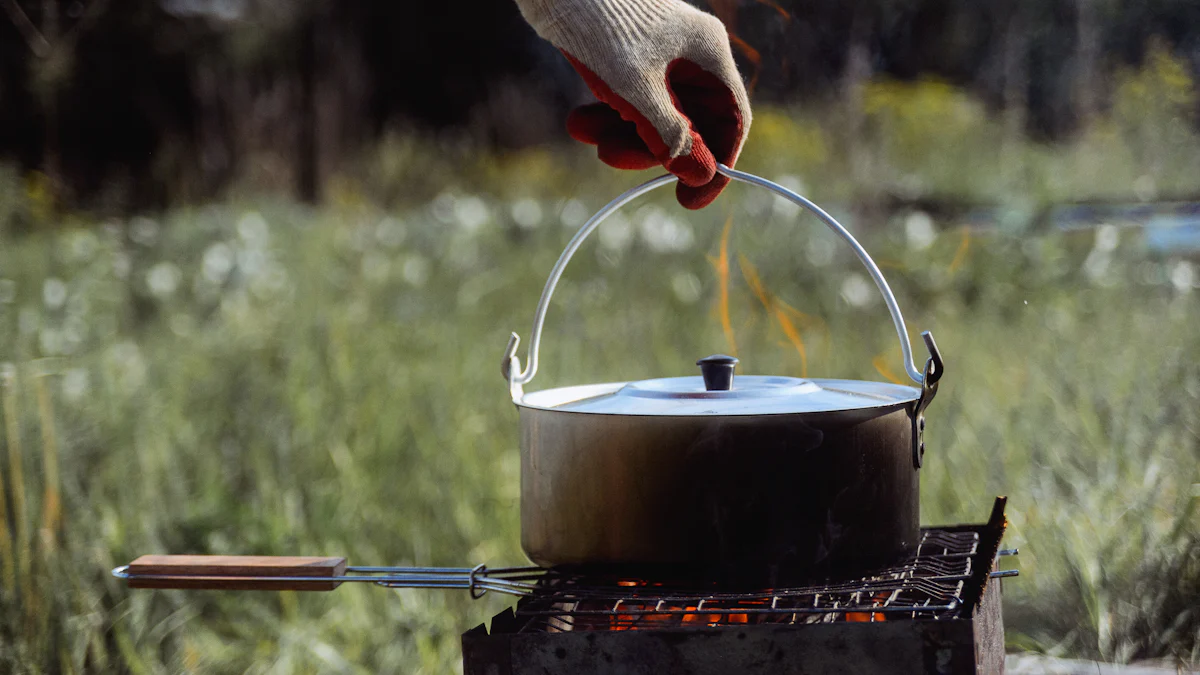
When choosing between a glass lid and a silicone lid, you must consider your specific needs. Glass lids offer transparency, allowing you to see your food as it cooks. They provide durability and withstand high temperatures. However, they can be heavy and prone to breakage. Silicone lids, on the other hand, are flexible and versatile. They fit various container shapes and save space. While they resist heat, they may stain or retain odours. Your choice depends on what you prioritize in your kitchen.
Characteristics of Glass Lids

1. Material and Design
a. Transparency and Aesthetic Appeal
A glass lid offers a clear view of your cooking process. You can easily monitor your food without lifting the lid, which helps maintain heat and moisture. This transparency not only serves a practical purpose but also adds an aesthetic appeal to your kitchenware. The sleek design of a glass lid complements various cookware styles, enhancing the overall look of your kitchen.
b. Weight and Handling
Glass lids for cookware tend to be heavier than their silicone counterparts. This weight provides stability when placed on pots and pans, reducing the risk of accidental tipping. However, you might find them cumbersome to handle, especially if you frequently move them around. Consider your comfort and strength when choosing a glass lid for your kitchen.
2. Pros of Glass Lids
a. Durability and Longevity
A glass lid is known for its durability. It can withstand high temperatures without warping or melting, making it ideal for stovetop and oven use. With proper care, a glass lid can last for many years, providing a reliable cover for your cooking needs.
b. Heat Resistance
Glass lids for pots and pans excel in heat resistance. You can use them in various cooking environments, including ovens and stovetops. This feature allows you to cook a wide range of dishes without worrying about the lid’s integrity. The ability to handle high temperatures makes a glass lid a versatile addition to your kitchen.
Characteristics of Silicone Lids

1. Material and Design
a. Flexibility and Versatility
Silicone lids for pans offer remarkable flexibility. You can stretch them to fit various container shapes and sizes. This adaptability makes them a practical choice for covering bowls, pots, and even oddly-shaped containers. Their versatility extends beyond just fitting; silicone lids can also serve multiple purposes in your kitchen, such as acting as a splatter guard or a makeshift trivet.
b. Lightweight and Easy to Handle
Silicone lids are lightweight, making them easy to handle. You can effortlessly place them on and remove them from containers without straining your wrists. This ease of use is particularly beneficial if you frequently switch lids between different containers. Their lightweight nature also makes them ideal for travel or outdoor activities, where carrying heavy kitchenware is impractical.
2. Pros of Silicone Lids
a. Space-Saving and Easy Storage
Silicone lids excel in space-saving. This feature is especially useful in kitchens with limited storage. You can stack them neatly in a drawer or tuck them into a cabinet corner, freeing up valuable space for other kitchen essentials.
b. Versatile Fit for Various Containers
Silicone lids provide a versatile fit. You can use them on a wide range of containers, from glass bowls to metal pots. This universal compatibility reduces the need for multiple lid sizes, simplifying your kitchen inventory. You can quickly cover leftovers or prepare meals without searching for the right-sized lid.
Comparison of Glass and Silicone Lids
1. Durability and Longevity
a. Glass vs. Silicone in Terms of Wear and Tear
When considering durability, both glass lids and silicone lids have their strengths. A glass lid offers exceptional resistance to high temperatures and maintains its shape over time. You can rely on it for consistent performance in various cooking environments. However, you must handle it with care to avoid breakage. In contrast, silicone lids are less prone to physical damage. They can endure bending and stretching without losing their form. While they may not withstand extreme heat like glass, they offer resilience against everyday wear and tear.
2. Flexibility and Versatility
a. Usage Scenarios for Each Type
On the other hand, silicone lids excel in situations requiring adaptability. You can stretch them over various container shapes, making them perfect for storing leftovers or covering bowls. Their versatility extends to outdoor activities, where lightweight and flexible options are preferred.
b. How Each Type Fits into Kitchen Organization
Conversely, silicone lids offer a space-saving solution. Their flexibility makes them easy to tuck away in drawers or cabinets, freeing up space for other kitchen essentials.
Choosing between glass and silicone lids depends on your kitchen needs. Glass lids offer durability and heat resistance, perfect for high-temperature cooking. They let you see your food as it cooks. However, they require careful handling due to their fragility. Silicone lids provide flexibility and space-saving benefits. They fit various containers and are easy to store. Consider your cooking habits and available storage space. If you prioritize heat resistance and visibility, glass might be your choice. For versatility and convenience, silicone could be ideal. Evaluate your preferences to make the best decision for your kitchen.
Post time: Jan-06-2025


